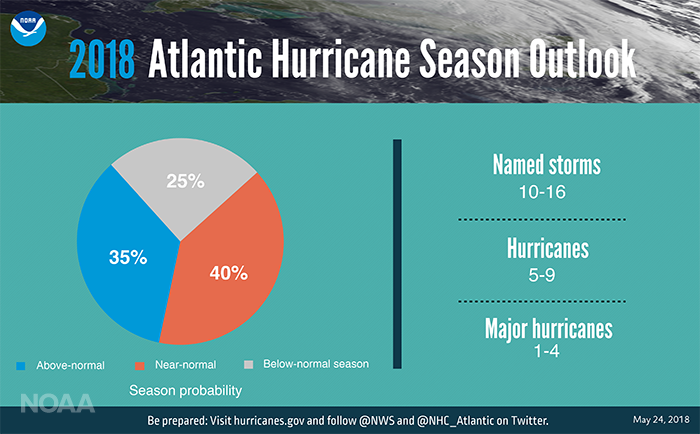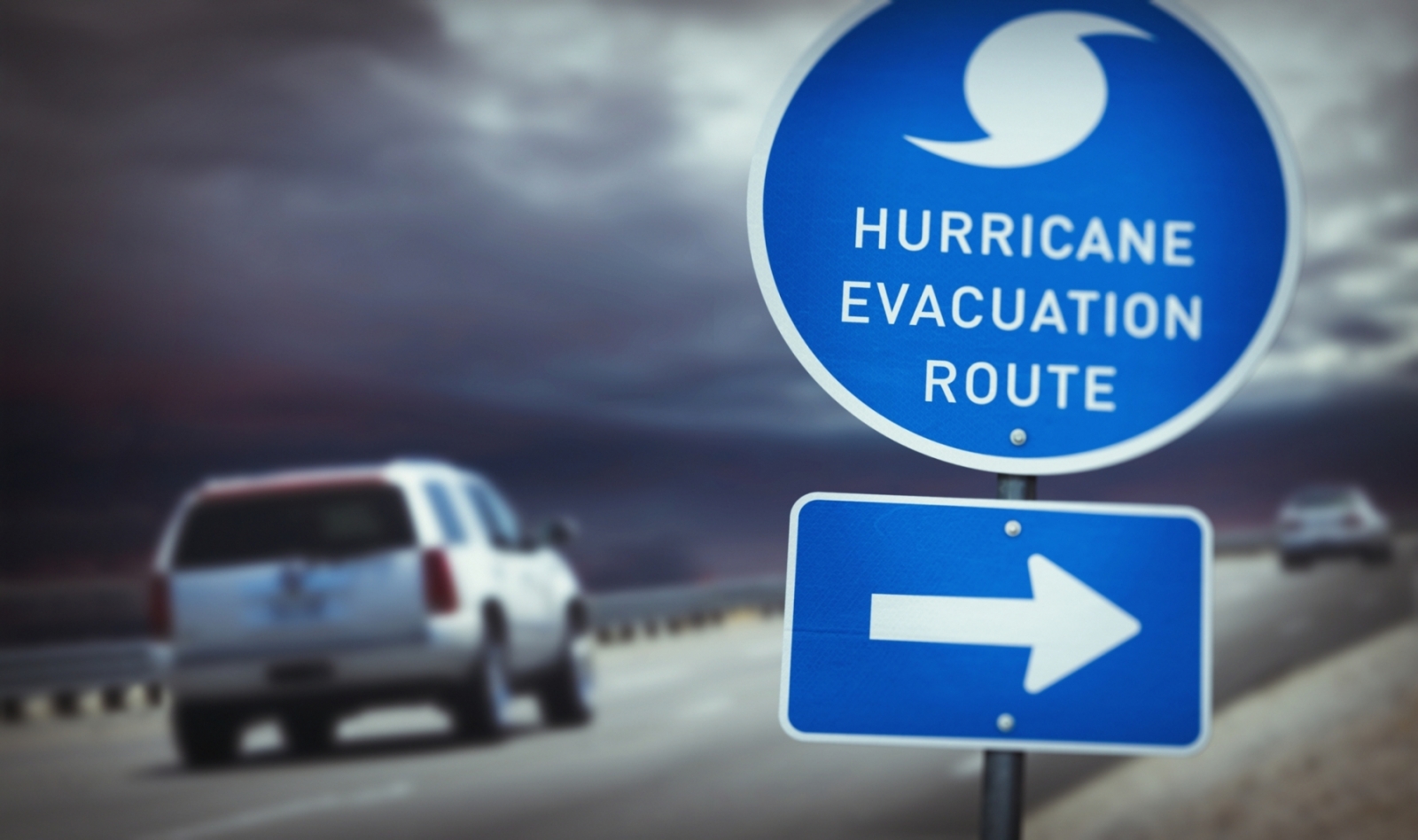The climate prediction center of the National Oceanic and Atmospheric Administration (NOAA) is predicting near- or above-normal hurricane activity this year. Specifically, forecasters believe there is a 35 percent chance of an above-normal season, a 40 percent chance of a near-normal season and a 25 percent chance of a below-normal season.
No word yet on whether they consulted with South Carolina’s “Foghorn Guvnah” Henry McMaster, who has pioneered the search for the “brain” of hurricanes ….
“NOAA’s forecasters predict a 70-percent likelihood of 10 to 16 named storms (winds of 39 mph or higher), of which five to nine could become hurricanes (winds of 74 mph or higher), including one to four major hurricanes (category 3, 4 or 5; with winds of 111 mph or higher),” a release from the agency noted. “An average hurricane season produces 12 named storms, of which six become hurricanes, including three major hurricanes.”
Take a look …
(Click to view)

(Via: NOAA)
Hurricane season runs from June 1 to November 30 each year. Last year there were 17 named storms including ten hurricanes and six major hurricanes. Three of those storms – Harvey, Irma and Maria – did catastrophic damage to this nation.
Harvey was the first major hurricane to hit the United States since Wilma in 2005, and is tied with 2005’s Hurricane Katrina as the costliest hurricane to ever hit our nation. The storm – which killed 106 Americans – also dumped 60.5 inches of rain on the state of Texas, a new record.
Two weeks later, Irma slammed into the Florida Keys with similar ferocity – then sliced northward through the Sunshine State on a path that ultimately left 92 Americans dead.
It was the first time in recorded history that two storms of such intensity made landfall in the same season.
Days later, Maria decimated Puerto Rico – killing 64 people on the island. The storm also wiped out the island’s electric grid, leaving 3.4 million of its people without power.
All told, the 2017 hurricane season did a record $282.2 billion worth of damage. That’s more than $100 billion above the previous record (after adjusting for inflation).
[timed-content-server show=’2018-Jan-17 00:00:00′ hide=’2018-Jun-18 00:00:00′]SPONSORED CONTENT – ARTICLE CONTINUES BELOW
[/timed-content-server]
Why was last year’s season so busy? Forecasters initially thought El Niño conditions would prevail last year, but that didn’t happen. In fact, neutral temperatures eventually morphed into a La Niña – which facilitated hurricane development.
El Niño is the periodic warming of the central and eastern equatorial regions of the Pacific Ocean – while La Niña refers to the cooling of the Pacific that takes place in its aftermath.
What does the temperature of the Pacific Ocean have to do with hurricanes in the Atlantic Ocean? During El Niño years, hurricanes are less likely to form in the Atlantic due to increased wind shear. From 2014-2015 – when El Niño conditions were prevailing – there were only nineteen named systems and ten hurricanes (four of which developed into major storms). By contrast, between 2010-12 – when La Niña conditions prevailed – there were 57 named storms and 29 hurricanes (of which eleven developed into major systems).
For more hurricane history, click here.
Obviously we will be keeping a close eye on this year’s season … especially after Irma tried to take out our founding editor Will Folks last year.
***
WANNA SOUND OFF?
Got something you’d like to say in response to one of our stories? Please feel free to submit your own guest column or letter to the editor via-email HERE. Got a tip for us? CLICK HERE. Got a technical question or a glitch to report? CLICK HERE. Want to support what we’re doing? SUBSCRIBE HERE.
Banner: Getty
